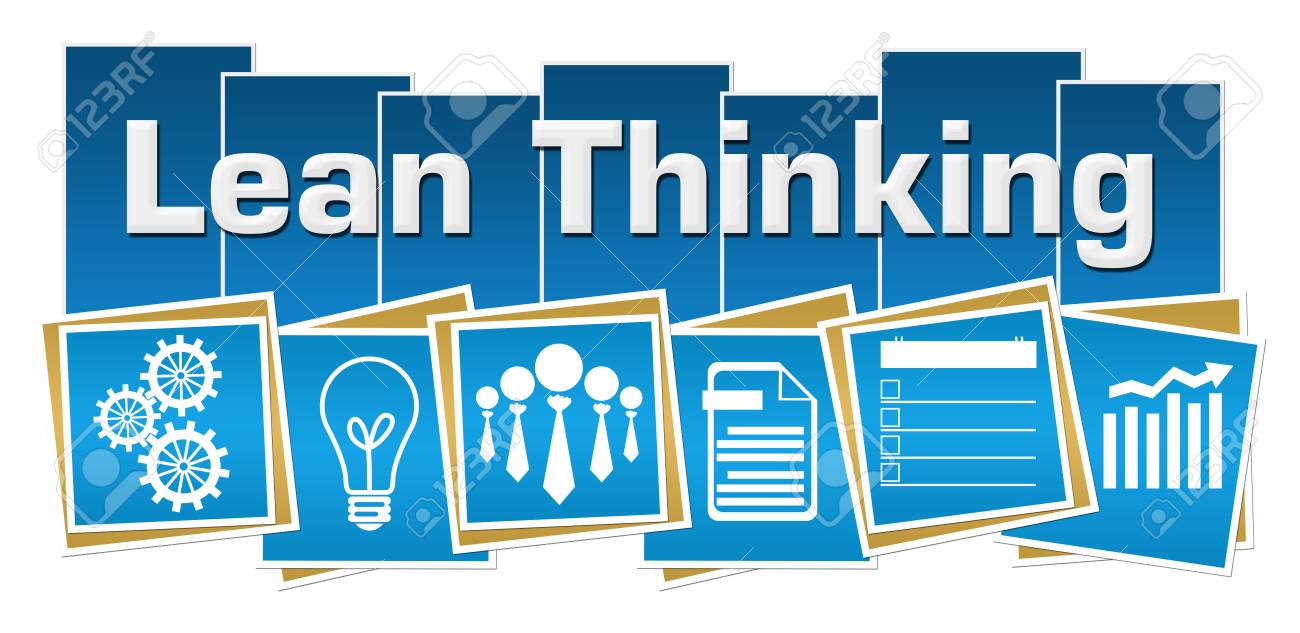- Home
- CDC ASIA PACIFIC CONSULTANCY
LEAN SIX SIGMA BLACK BELT - INTERNATIONAL CERTIFICATION
The Lean Six Sigma methodology is a systematic application that is focused on achieving significant financial results and increasing customer satisfaction. When properly deployed on carefully selected business projects, this methodology can lead to a significant reduction—and in many cases, elimination—of defects, process waste, and out-of-control processes, which translate into dramatic business gains.
The Lean Six Sigma Black Belt Body of Knowledge is a compilation of comprehensive set of topics and subject matters that are intended to be representations of the universally and commonly accepted, minimum competencies and core proficiencies requisite of Lean Six Sigma Black Belts. This Lean Six Sigma Black Belt Body of Knowledge is diversely recognized as a relevant and practical version of the knowledge expectations of Lean Six Sigma Black Belt. It consists of covering the proven phases of Define Phase, Measure Phase, Analyze Phase, Improve Phase and Control Phase. These phases cover the primary sections of Define, Measure, Analyze, Improve and Control phases, which are each broken down into sub-categories consisting of individual subject matter topics.
Increase yield
Reduce cost
Reduce waste
Reduce customer complains
Reduce rework cost or eliminate rework
Reduce inspection cost
Enhance product quality
On-time delivery
Enhance safety
Improve employees’ problem solving and decision making skills
Improve efficiency
Improve accuracy and control
Improve customer service
Improve cash flow
Improve regulatory compliance


Fundamental Session – Lean Six Sigma Concepts Why Lean Six Sigma ?
Why Lean Six Sigma ?
Be customer focused: Be on-time, responsive, flexible, and fast.
Simplify and standardize work flows: Mimic continuous flow, minimize WIP, use visible measures.
Manage capacity: Increase process uptime, reduce set-up times, find “lost” capacity.
Eliminate waste: Identify non-value adding activities, then modify, combine, or eliminate those tasks.
JIT: Not too early and never late; not just-in-case inventory but just-in time production and delivery; products must always be made right the first time; equipment must always work when needed.
Lean Terminology – Terms, Tools and Techniques.
Eliminate Waste with Lean
Identify the waste
Identify the types of waste
Use pull scheduling instead of push scheduling.
Schedule to the rate-determining step (the bottleneck., then de-bottleneck process lines.
Facilitate fast feedback:
Components of Lean
Overview of the Components of Lean: Value Stream Mapping, Workplace Organization, Predictability & Consistency, Set-up Reduction, TPM, Visual Factory, Support Processes, & Continuous Improvement.
Lean Thinking
Eliminating waste is not limited to manufacturing; the same techniques apply to the office, sales, finance, maintenance, and even R&D processes and procedures.
Lean & Six Sigma are complementary.
LEAN PRACTICES
Value Stream Mapping.
Identify process goals.
Key Process Input Variables
Key Process Output Variables
Collect & analyse process data.
Work flow analysis to determine how to minimize high volume travel
distances.
Identify and remove bottlenecks, & move to pull manufacturing with kanbans.
IMPLEMENTING LEAN SIX SIGMA BLACK BELT IN BUSINESS
Lean Starts with People
Communicate the why, what, how, & who.
Provide education in the concepts.
Train employees in tools & techniques as needed to achieve a flexible workforce.
Data Drives Lean
Focus efforts on projects that lead to tangible saving.
Calculation techniques to generate data include: Time studies, equipment loading, TAKT time, staffing requirements, process yields, & CTQ.
Road map for Lean
Start with the people issues.
Focus on workplace organization then, use value stream analysis and process work flow analysis to establish effective layouts.
Where to focus next depends on specific needs.
Use targeted Kaizen events to speed changes.
Do not overlook the need to modify support processes
This module will give an introduction to some of the history of lean, how this has developed into a business system and provides a detailed explanation of the principles behind how lean can be made to work in any business. In this module you will learn that successful implementation of lean demand the involvement of people across the organization.
Introduction of Lean Management
Principle of Lean Thinking
The principle that the customer defines value – beginning of lean improvement activity The importance of delivering customer value without waste using Value Stream Thinking, Flow in the work place and delivering the value.
Standard work in order
Personal commitment and change our action, habits, values and belief
Power of A3 Thinking for process improvement
A3 Thinking for root cause analysis and practical solution
A3 Thinking for visual process which can reduce the very common of waste and rework Moving forward in our organization


Base Line Analysis is the engine of change that builds the future state vision piece by piece. We do this by involving people who work in the process to help make it happen and the key differentiator between Rapid Process Improvement and most other improvement activities is the real change is delivered within short time period.
Process focus
Identification and elimination of barriers to flow
Flow and the economies of flow
Understanding of Variation
Wastes (Muda), Fluctuation (Mura) and Overburden (Muri)
Connect and align value added work fragments
Match rate of production to level of customer demand – just in time
Scientific thinking – stability, standardization, recognize abnormality, go and see
Jidoka
Quality at the source
No defects passed forward
Separate man from machine
Multi process handling
Self detection of error
Stop and fix
Seek Perfection
Incremental continuous improvement (Kaizen)
Breakthrough continuous improvement (Kaikaku)
Total System Value Stream Mapping to analyse the problems and wastes
Visual workplace – to analyse waste in the process
5S standards and discipline
Production, Process and Preparation (3P) to identify the wastes
Total Productive Maintenance – 16 Manufacturing Losses, OEE, MTTR, MTBF
Standard Work – Time Study in the process
Strategic Business Assessment – Productivity indicators analysis
Rapid Breakthrough Improvement Process Methodology
Lean Six Sigma Approach
Project Management Application

RAPID BREAKTHROUGH IMPROVEMENT TECHNIQUES USING LEAN SIX SIGMA BLACK BELT
The seeing waste module review the differing approach to improvement and then looks at the different types of process waste and discuss why process mapping is a good way of identifying this waste. As with all aspects of lean, the collection of supporting data is a pre- requisite to delivering a good result and process mapping is no different in needing supporting data.
This module will provide you with an overview of the process and then provides downloads that you will require in order to complete you own process mapping. One of the fundamental skills to help drive a lean transformation is problem solving. For problem solving to be successful organisation wide we need a structured process that everyone can use. This module will go through the fundamental around such a problem solving and corrective action process that you will then be able to use in your own organisation.
The Basics of Six Sigma
- Meanings of Six Sigma
- General History of Six Sigma & Continuous Improvement Initiatives Deliverables of a Lean Six Sigma Project
- The Problem-Solving Strategy of Y = f(x)
- Voice of the Customer, Business and Employee
- Six Sigma Roles & Responsibilities
The Fundamentals of Six Sigma
- Defining a Process oCritical to Quality Characteristics (CTQ’s)
- Cost of Poor Quality (COPQ)
- Pareto Analysis (80:20 rule)
- Basic Six Sigma Metrics
Selecting Lean Six Sigma Projects
- Building a Business Case & Project Charter
- Developing Project Metrics
- Financial Evaluation & Benefits Capture
Strategies of Implementing Lean and Six Sigma in an organization
- Difference and Similarities between Lean and Six Sigma
- An example of implementing Six Sigma for the whole enterprise.
- Other Models of Implementing Six Sigma
Lean and Six Sigma Implementation Case Study
Project Charter Case Study


Process Definition
- Cause & Effect / Fishbone Diagrams
- Process Mapping, SIPOC, Value Stream Map
- X-Y Diagram
- Failure Modes & Effects Analysis (FMEA)
Introduction to Minitab
Six Sigma Statistics
- Basic Statistics
- Descriptive Statistics
- Normal Distributions & Normality
- Graphical Analysis
Measurement System Analysis
- Precision & Accuracy
- Bias, Linearity & Stability
- Gage Repeatability & Reproducibility
- Variable & Attribute MSA
Process Capability
- Capability Analysis
- Concept of Stability
- Attribute & Discrete Capability
- Monitoring Techniques
Measurement System Analysis Case Study
- Micro Process Map
- Case Study
Patterns of Variation
- Multi-Vari Analysis
- Classes of Distributions
Inferential Statistics
- Understanding Inference
- Sampling Techniques & Uses oCentral Limit Theorem
Hypothesis Testing
- General Concepts & Goals of Hypothesis Testing
- Significance; Practical vs. Statistical
- Risk; Alpha & Beta
- Types of Hypothesis Test
Hypothesis Testing with Normal Data
- 1 & 2 sample t-tests
- 1 sample variance
- One Way ANOVA
- Tests of Equal Variance, Normality Testing and Sample Size calculation performing tests and interpreting results.
Hypothesis Testing with Non-Normal Data
- Mood’s Median
- Mann-Whitney
- Kruskal-Wallis oFriedman
- 1 Sample Sign
- 1 Sample Wilcoxon
- One and Two Sample Proportion Chi-Squared (Contingency Tables)


- Simple Linear Regression
- Correlation
- Regression Equations
- Residuals Analysis
- Multiple Regression Analysis
- Non- Linear Regression
- Multiple Linear Regression
- Confidence & Prediction Intervals
- Residuals Analysis
- Designed Experiments
- Experiment Objectives
- Experimental Methods
- Experiment Design Considerations
- Full Factorial Experiments
- 2k Full Factorial Designs
- Linear & Quadratic Mathematical Models
- Balanced & Orthogonal Designs
- Fit, Diagnose Model and Center Points
- Fractional Factorial Experiments
- Designs
- Confounding Effects
- Experimental Resolution
Lean Controls
- Control Methods for 5S
- Kanban
- Poka-Yoke
SPC
- SPC Data Collection
- Xbar-R Chart
- Xbar-S Chart
- U Chart
- C Chart
- P Chart
- NP Chart
- CumSum Chart
- EWMA Chart
- Control Methods
- Control Chart Anatomy
- Sub-grouping & Sampling
- Control Limit Calcs
Control Plans
- Cost Benefit Analysis
- Elements of Control Plans
- Elements of Response Plan


In this module, you will have the opportunity to reflect on the application of your learning in the workplace. Further more it is most important that you allocate sufficient time to complete any outstanding actions from your activities. As defined in the earlier modules RBI cycle, going to Gemba and helping the team to problem solve and get the result is crucial at this stage.
Principles of Business Results
Create value based on organization performance
Measure customer needs and wants
Guidelines for measurement
Measurement System
Align with customer needs
Measure the whole system
Measure flow and waste
Lean accounting
Voice of the customer
Goal and Objectives setting
Reporting
Key Lean Indicators Related Measures
Yield
Quality matters
Delivery
Cost
Financial Impact
Competitive Impact

